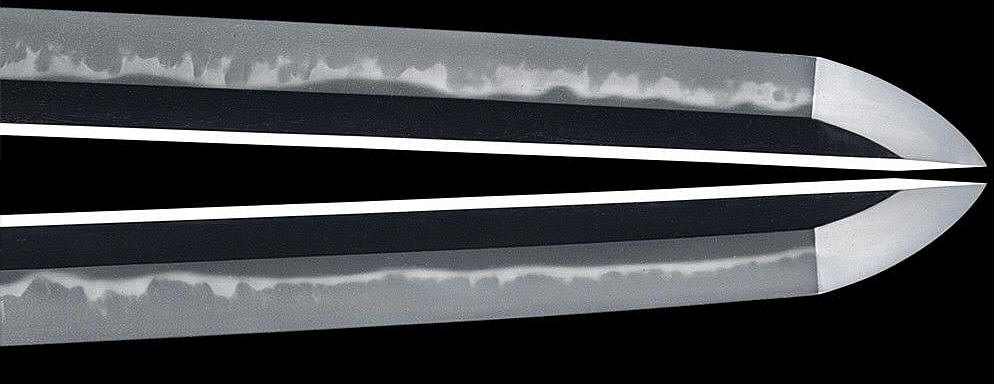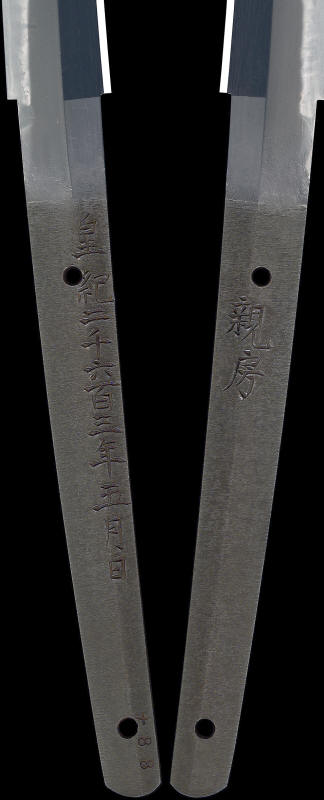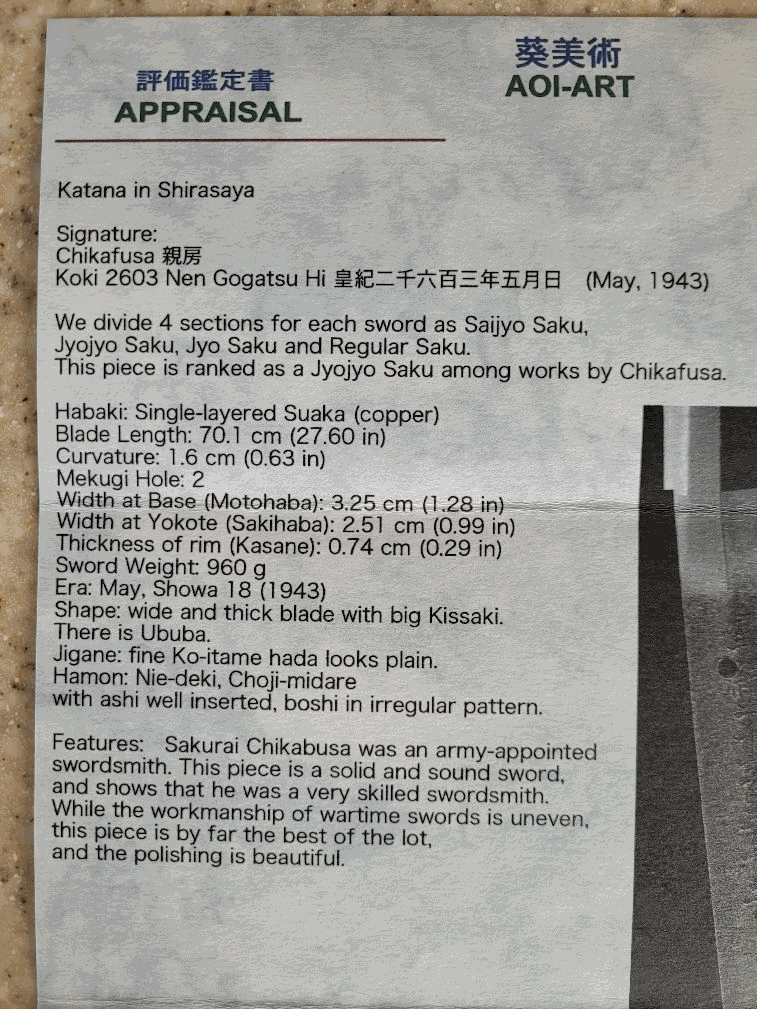
Tsukushi Nobukuni Tanto
GG528
Chikafusa Katana
GG528
Katana signed nijimei Chikafusa, dated, Koki ni sen rokuhaku san nen gogatsu hi (dated from 2603 years the founding of the empire) A day in May 1943 Hawatare 2 shahu 3 sun 1 bu 3 rin (70.1 cm / 27.9"). hMotohab: 3.25. Sakihaba: 2.51. Kasane: 74 mm.









